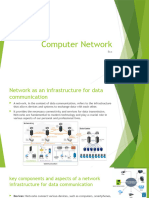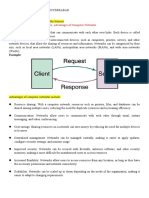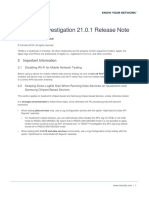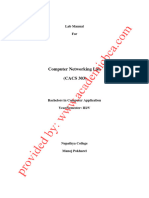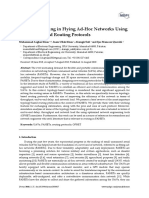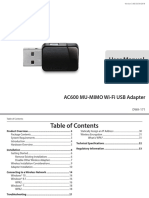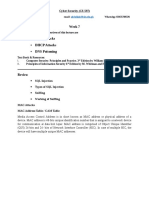0% found this document useful (0 votes)
30 views7 pagesIntroduction To Network Devices-01
The document provides an overview of computer networks, detailing their purpose in connecting devices for data sharing and communication. It describes key network devices such as routers, switches, and modems, as well as different types of networks (LAN, MAN, WAN) and their applications. Additionally, it covers network topology and the network layer of the OSI model, emphasizing the importance of routing and data management.
Uploaded by
priyanalla2004Copyright
© © All Rights Reserved
We take content rights seriously. If you suspect this is your content, claim it here.
Available Formats
Download as PDF, TXT or read online on Scribd
0% found this document useful (0 votes)
30 views7 pagesIntroduction To Network Devices-01
The document provides an overview of computer networks, detailing their purpose in connecting devices for data sharing and communication. It describes key network devices such as routers, switches, and modems, as well as different types of networks (LAN, MAN, WAN) and their applications. Additionally, it covers network topology and the network layer of the OSI model, emphasizing the importance of routing and data management.
Uploaded by
priyanalla2004Copyright
© © All Rights Reserved
We take content rights seriously. If you suspect this is your content, claim it here.
Available Formats
Download as PDF, TXT or read online on Scribd
/ 7














